Pictures of buildings mentioned in the second edition “Suffolk” volume of “The Buildings of England” series by Sir Nikolaus Pevsner.
Pevsner notes of Ipswich that: "Ipswich was an important port in the Middle Ages. Already in Domesday it had nine churches." and "More medieval parish churches are preserved in Ipswich than in any other English town of its size." There then follows descriptions of 20 churches, numerous other non-conformist buildings, public buildings running to 3 pages and then four "perambulations" and concluding with six houses of outer Ipswich. The latest "third" edition of Pevsner's Suffolk East has 76 pages on Ipswich. It is therefore nowhere near possible to show everything mentioned so what follows is a small selection of my own, unrelated in order to their mention by Pevsner.
First, Christchurch Mansion and Art Gallery. House built in 1548-50 of which Pevsner says: "Red brick with dark blue diapering. Two storeys." Upper storey rebuilt after a fire around 1674. "The house contains much of interest to the user of this volume. According to the principles of the series, however, it cannot be described in detail." Seen here:
First, Christchurch Mansion and Art Gallery. House built in 1548-50 of which Pevsner says: "Red brick with dark blue diapering. Two storeys." Upper storey rebuilt after a fire around 1674. "The house contains much of interest to the user of this volume. According to the principles of the series, however, it cannot be described in detail." Seen here:

The Unitarian Meeting House. "By Joseph Clarke, a carpenter, 1699-1700. One of the best of its date in England. Front of five bays and two storeys with hipped roof. The first and last bays have broad doorways with pediments on well-carved brackets and oval windows over. The other bays are two-storeyed and have wooden cross-windows. The W side is of four bays and two storeys, the E side of five bays with a central doorway decorated like those of the front." The front and E are seen here:
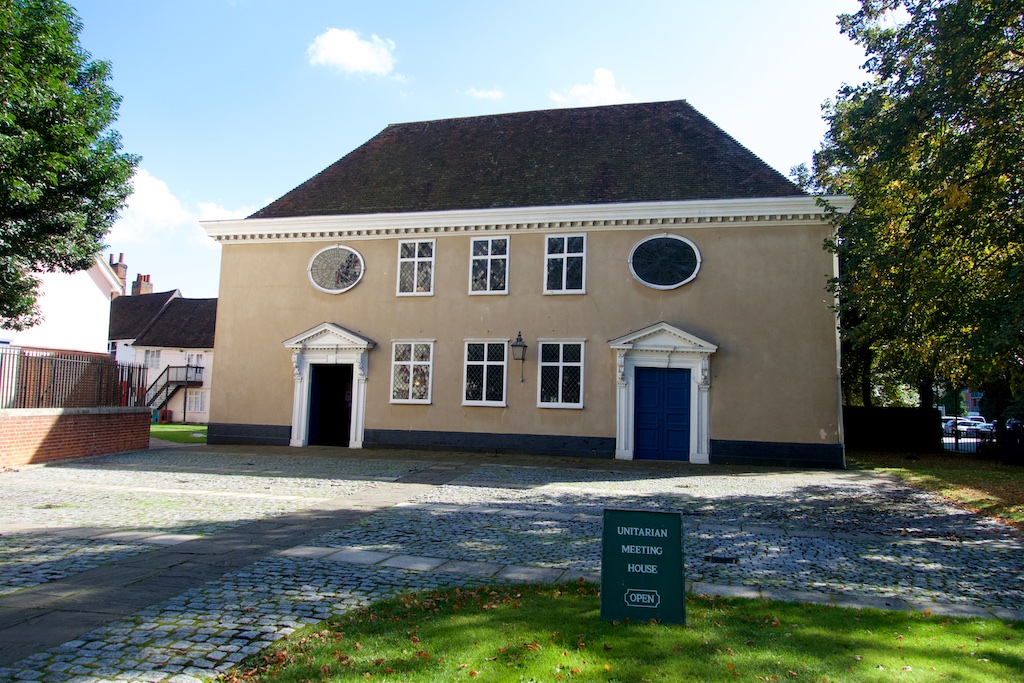
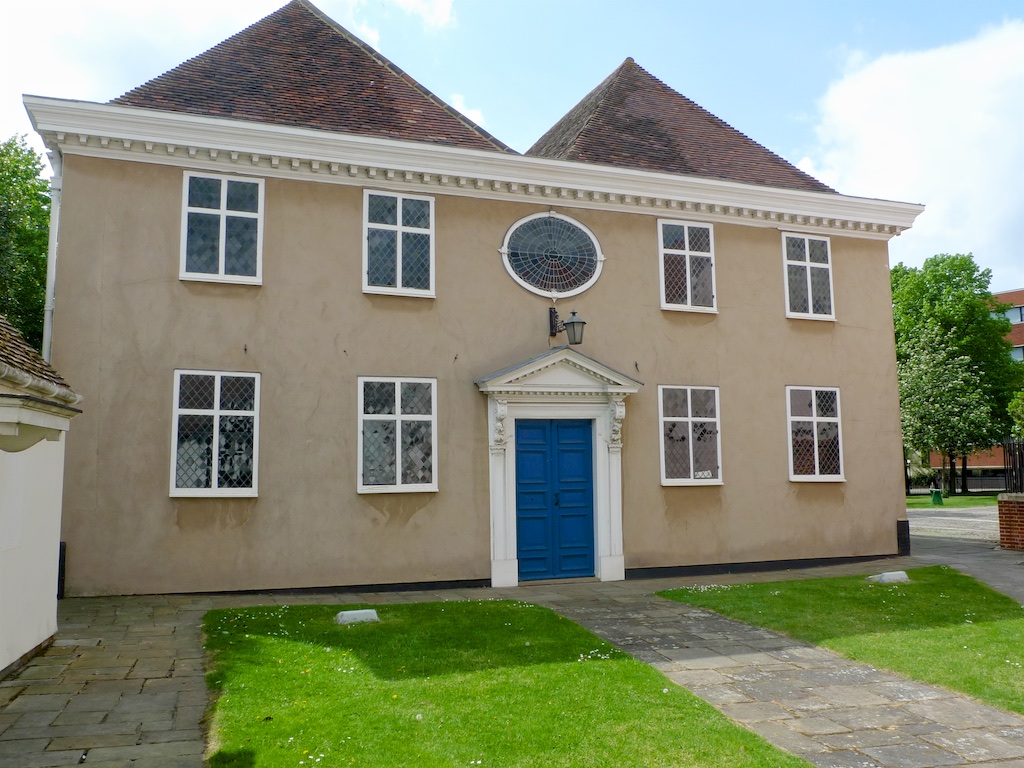
In Buttermarket: "The most spectacular house in Ipswich, Sparrowe's House, also called the Ancient House. It is in fact more ancient than it looks." In describing it he says it looks of c1670 but within is a heavy C15 hammer-beam roof "no doubt belonging to the solar wing of a house whose hall was in the front range and was, internally and externally converted c1670." The extensive pargetting is described. Seen here:
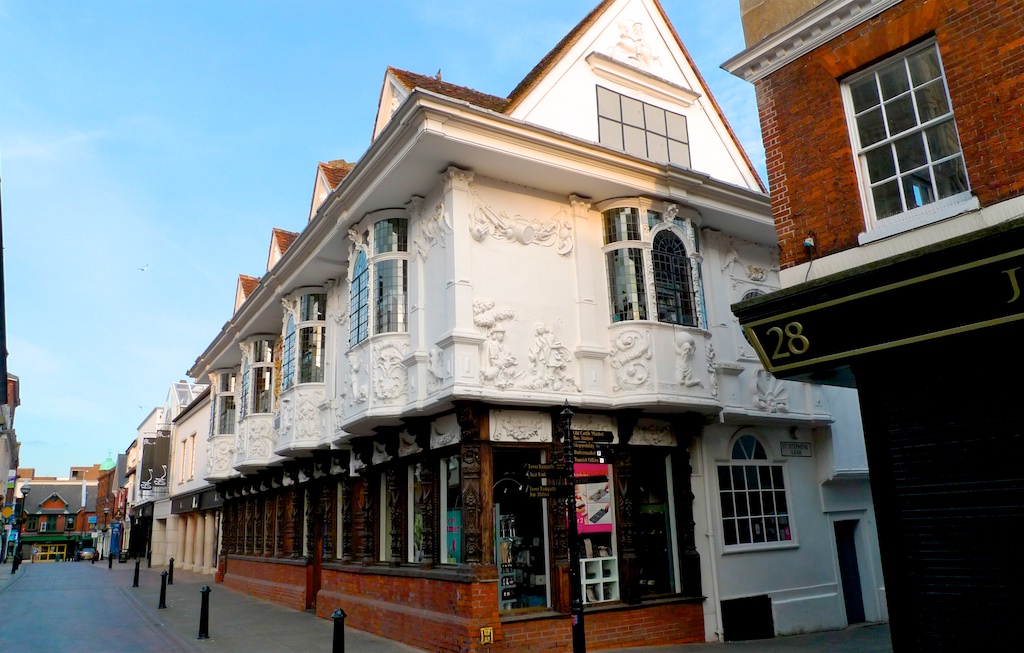
The coat of arms of Charles II and two of the four oriel windows are shown below. "The oriels have convex sides. The arrangement of the glazing bars is eminently typical of c1670. The centre light is arched, the lights in the convex sides are straight. But glazing continues above the straight top as well as the arched top, so that the effect is different to that of the so-called Venetian window." Pevsner does not say so n this entry but this form of window design, not just convex and oriel, became known as Sparrowe's windows.
"The whole is gayer than any other house of its date in England."
"The whole is gayer than any other house of its date in England."
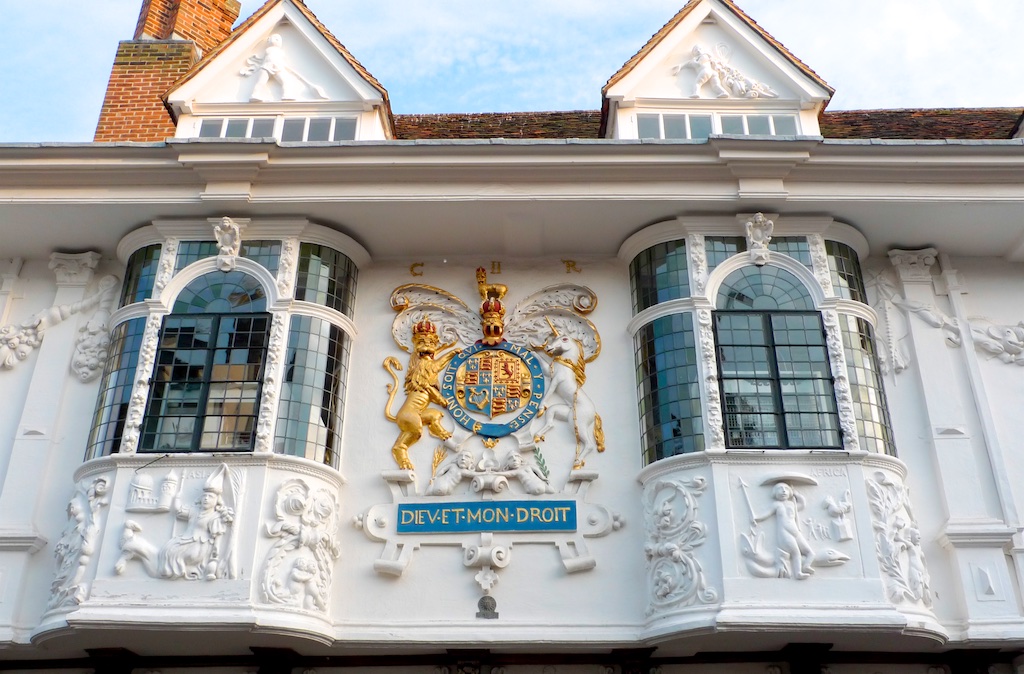
Next, to Fore Street. This is a disjointed street in three parts but contains several interesting buildings. Here we look at No 24 which: "is an excellent example of the time of Sparrowe's House. It has three oriels and three gables above them. In the gables, windows of the type of those in the oriels of Sparrowe's House. The first floor is pargetted with plain panelling." Seen here:
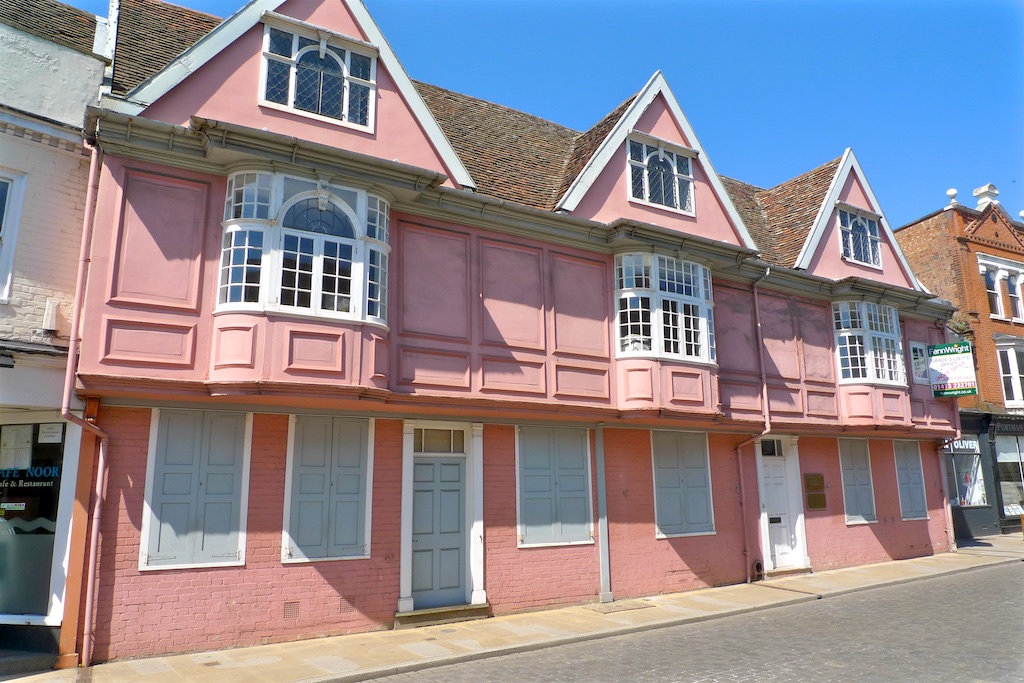
Next to Wolsey's Gateway, the "one remaining fragment of Cardinal Wolsey's ambitious Cardinal College of St Mary. The Cardinal founded this on the site of the Augustinian Priory of St Peter and St Paul in 1527, but had not enough time to complete it before he fell." The Gateway, immediately E of the the churchyard of St Peter's (which served as the college chapel), cannot have been the main gateway. Brick. Coat of arms and four niches over. Polygonal angle buttresses. The former pinnacles have disappeared." It is now forlorn beside a busy road. Local historians have suggested that it was originally an entrance from the River Orwell. It is now some way from water which is now a marina. Seen here:
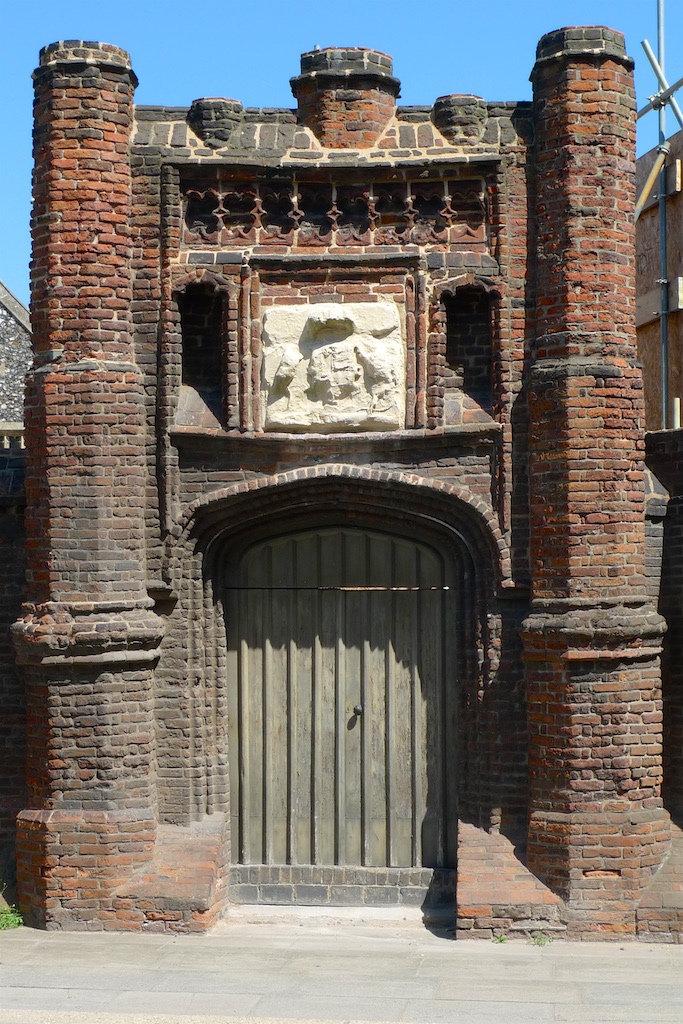
Whilst we are on Gateways we move to Pykenham's Gateway on the W side of Northgate Street. Pevsner says: "The remarkable gateway to Archdeacon Pykenham's former mansion. Pykenham became Archdeacon of Suffolk in 1471, Dean of Stoke Clare College and Rector of Hadleigh in 1472, and died in 1472". For his other gateway, see Hadleigh. "The Ipswich Gateway is brick and has a four-centred arch and a (rebuilt) stepped gable. The back is timber-framed and the arch and spandrels of the gateway are here of wood too. One of them has a carved pike." The back is seen here:
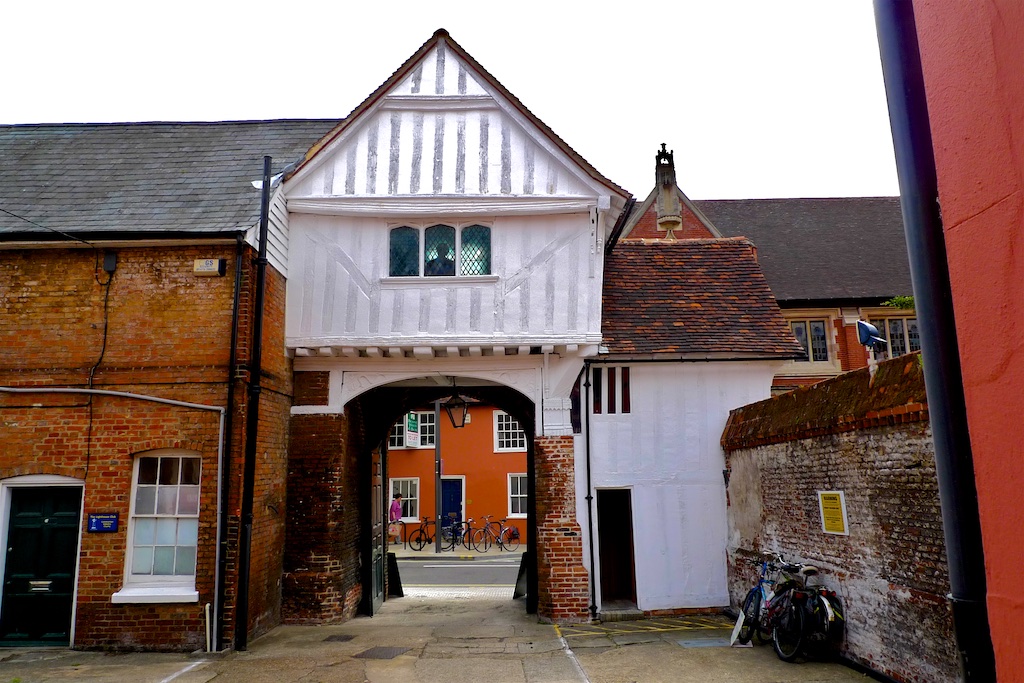
Now to Silent Street looking to the corner of St Nicholas Street for a group of timer-framed houses:

Then to Key Street for the Old Custom House facing into the quayside. Described by Pevsner as: "1844, by J. M. Clark. Remarkably original. Red and yellow brick. The style is classical and the front towards the river monumental and symmetrical, with a bold raised four-column portico carrying a far-projecting pediment. Large open stairs lead up to it. Behind them on the ground floor a small entrance placed in a deep niche lined with nicely cut ashlar stone and distinguished by a heavy Gibbs surround. The symmetry of this frontage is very self-consciously broken by the tower at the far l. corner. As seen here:

For more details of the guildhall and information on gilds and gildhalls in general, see suffolkguildhalls.com